SYNTH-ETHIC
Initiated as a part of the first BIO·FICTION Science Art Film Festival, Biofaction organized an art exhibition related to synthetic biology, synth-ethic. While artists increasingly use biotechnologies in order to manipulate living systems, the new field of synthetic biology aims at applying engineering principles to biology, so to not only modify but to build up „life“ from scratch. In the exhibition synth-ethic, internationally reknown artists question this new technological dimension and the deriving ethical stance when life becomes synthetic. Their works explore the areas of tension between molecular biology and ecology, architecture and biochemistry, technology and nature, cybernetics and alchemy. The exhibition was hosted in Natural History Museum Vienna from May 14 – June 26, 2011.
Download the Gallery Guide here.
Participanting Artists / Works:
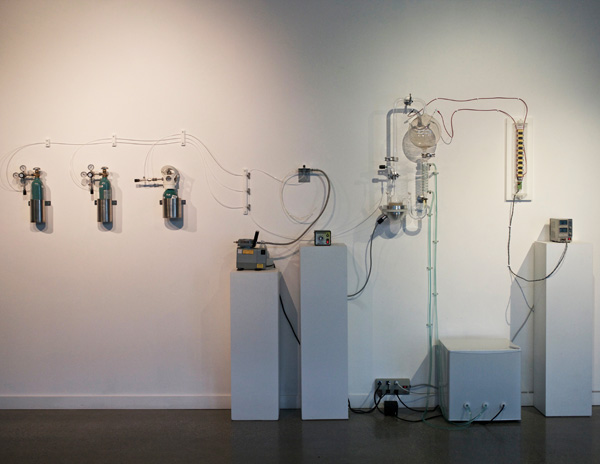
Adam Brown / Origins of Life: Experiment #1.4
Could life still be originating on earth today? This is a question asked by many. The standard answer is “no.” Origins-of-life chemists assert that the oxygen in the current atmosphere would prevent the reactions necessary to produce prebiotic molecules such as amino acids and nucleic acids. Origins of Life: Experiment #1.4, developed by artist Adam Brown in collaboration with physiologist Robert Root-Bernstein and atmospheric chemist Maxine Davis at Michigan State University, is a performative art installation that stages a miniature model of the earth today as a live experiment. Will the common assumption prove true or false in this public laboratory setting?
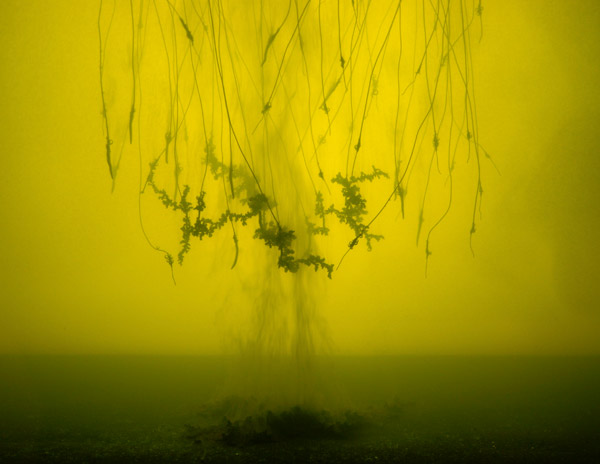
Roman Kirschner / Roots
Roots is a cyclical sculpture, a self-forming and composing crystal object in an aquarium, which takes on the qualities of a dream-like screen based on an old Persian myth about a bush that sprouts heads. Slowly and steadily, black crystals, whose structures resemble coral or nerve cells, branch out. Bubbles ascend like jellyfish. Branches break off and sink to the dark bottom, where they begin to dissolve and become thick clouds hovering over the scene. Audibly perceptible new growth begins on the ruins of the decomposition. Yet, the self-guided processes in Roots are based on an intelligent technical design and a regulated electrical current, set in motion by soft and hardware but not entirely controlled by it. Electricity is pulsed through the whole sculpture. It is the key to the constant transformation. Growth changes the flow of the current. The modified flow changes the growth. Roman Kirschner’s installation materializes numerous principles central to the precursors of synthetic biology and their concept of programmable circuits and biological information modules.
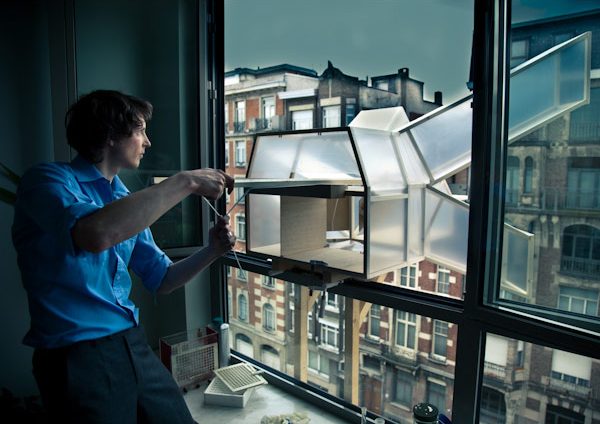
Tuur Van Baalen / Pigeon d´Or
Pigeon d’Or proposes the use of pigeons as a platform and interface for synthetic biology in an urban environment. Tuur van Balen’s project attempts to make them defecate soap! By modifying the metabolism of bacteria naturally occurring in the gut of pigeons, synthetic biology allows to add new functionality to animals commonly seen as vermin and “flying rats,” turning them into tools for urban disinfection. In collaboration with James Chappell, the artist has designed a special bacteria that, when fed to pigeons, turns their faeces into a biological window soap. This both micro and macro scale art project addresses the ethical, political, environmental and safety-related consequences of synthetic biology. Will we suddenly care for the manipulated pigeon’s health – while usually trying to poison them without remorse? Will we treat pigeons differently once they become useful for cleaning our cars? Is it dangerous to release products of synthetic biology into the environment?
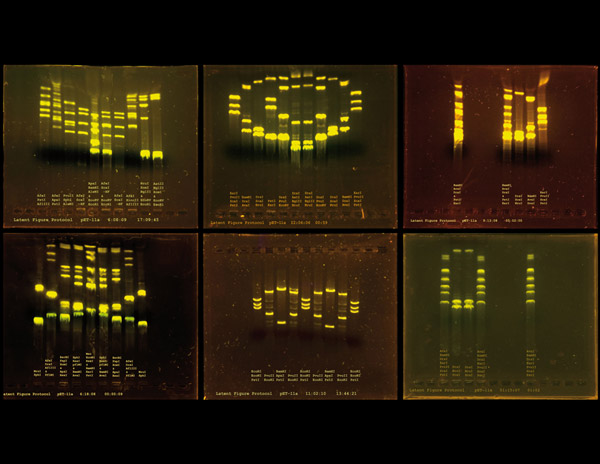
Paul Vanouse / Latent Figure Protocol
The motifs of the Latent Figure Protocol (LFP) are manipulations of so-called “genetic fingerprints.” They are based on making visible the banding patterns created by gel electrophoresis, the process that is employed in DNA analysis. Vanouse subversively uses analytic laboratory methods for synthesis. Here, the process is used to create figurative images from a known DNA sample instead of the customary abstract patterns from an unknown DNA sample, so that significant motifs, such as ID, 01, the copyright symbol, the chicken and the egg, or the “skull & crossbones” pirate design, emerge. Vanouse reveals how such uncritically accepted turns of phrase as “genetic fingerprinting” become engraved in the public mind as infallible markers of identity. Yet, does not contemporary gene fetishism, as an argument for natural predetermination, rather serve to cement questionable social clichés and prejudices?
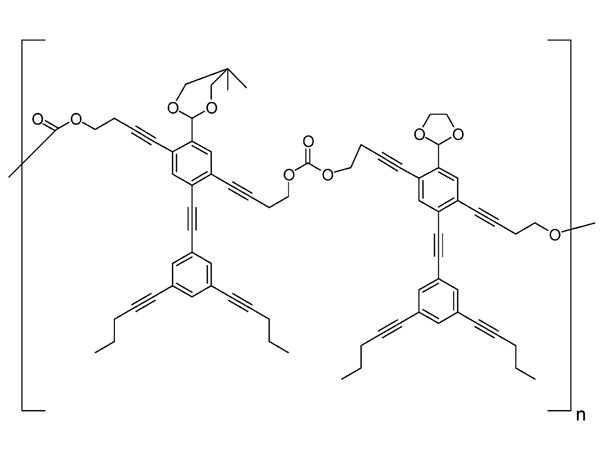
Chanteau und Tour / Nanoputians
Using the tools of chemical synthesis, the ultimate in designed miniaturization can be attained while, at the same time, producing those structures and organic forms we best recognize: those that resemble humans. James Tour and Stephanie Chanteau have christened their anthropomorphic molecules NanoPutians, after the Lilliputians in Jonathan Swift’s classic, Gulliver’s Travels. Each of the ten bottles in the exhibit contains innumerable populations of NanoPutians, each with its own individual head dressing; only a few milligrams of material correspond to some 100 billion billion of these 2 nano-meter-tall anthropomorphic, carbon-based molecules. The NanoPutians illustrate the human desire to ascribe life-like features even to our technical creations and to metaphorically inscribe anthropocentrism into the microscopic scale of chemical synthesis or synthetic biology.
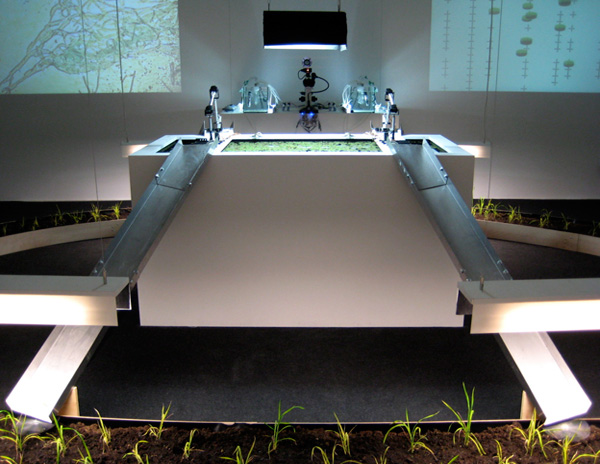
Andy Gracie / Autoinducer_Ph-1
Autoinducer_Ph-1 is a semi-synthetic ecosystem that explores the question of how the evolutionary adaptation of natural organisms to artificially-created living entities might happen, and vice versa. It consists of biological, electro-robotic and computing processes, thus staging a permanent interaction between an artificial bacteria, a techno-organism based on software and a robotic system, and three organic protagonists: rice, Azolla fern, and the cyanobacteria Anabaena. The installation takes traditional rice cultivation techniques from Asia, where the water fern Azolla is used as an organic, nitrogen rich fertilizer in rice paddies, as its starting point. Andy Gracie turns them into a complex networked laboratory mirroring contemporary agricultural techniques and the increasingly machinic nature of ecosystems.
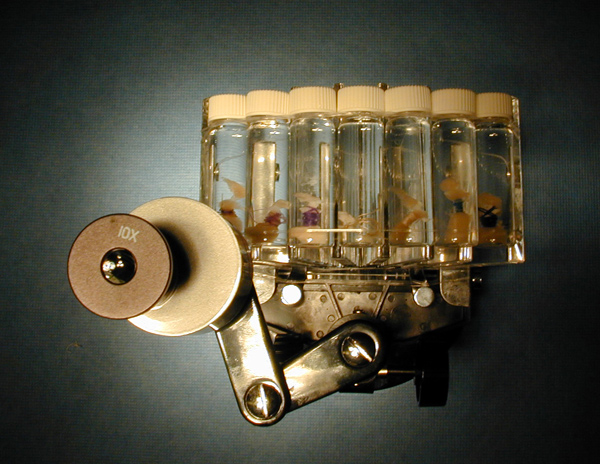
Tissue Culture and Art Project / Semi-living Worry Dolls
Autoinducer_Ph-1 is a semi-synthetic ecosystem that explores the question of how the evolutionary adaptation of natural organisms to artificially-created living entities might happen, and vice versa. It consists of biological, electro-robotic and computing processes, thus staging a permanent interaction between an artificial bacteria, a techno-organism based on software and a robotic system, and three organic protagonists: rice, Azolla fern, and the cyanobacteria Anabaena. The installation takes traditional rice cultivation techniques from Asia, where the water fern Azolla is used as an organic, nitrogen rich fertilizer in rice paddies, as its starting point. Andy Gracie turns them into a complex networked laboratory mirroring contemporary agricultural techniques and the increasingly machinic nature of ecosystems.
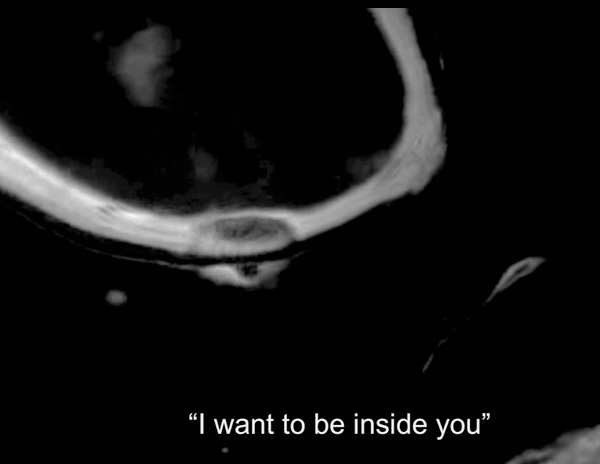
Rachel Armstrong /Living Chemistry & A “Natural History” of Protocells
The installation Living Chemistry shows the formation of precursors, or models of living cells formed by the innate, complex chemistry of molecules existing at the interface between oil and water. Due to chemical interactions these so-called protocells are able to move around, sense their environment, and exhibit complex behaviours observable to viewers. Protocells share some of the physical-chemical properties of living organisms; they are “not yet alive” but are considered the missing link between the barren early earth and the first living organisms in evolution. Here, a protocell metabolism has been designed and engineered through the considered selection of the chemicals involved. The three panels on display contain a system where a water-based droplet in an oil phase exhibits life-like properties by virtue of so-called saponification occurring precisely at the oil/water interface. A chemical protocell system is also aestheticized in the short film A “Natural History” of Protocells by Rachel Armstrong and Michael Simon Toon. Oil molecules react with a strongly alkaline environment, giving rise to the emergence of moving crystalline microstructures. Subtitles suggest an ongoing dialogue between those entities, developing hypothetic emotional narratives that stress the human desire to see even the smallest units of “life” through an anthropomorphic lens.

Art Orienté Objet / Que le cheval vive en moi
The performance Que le cheval vive en moi (May the horse live in me) is an extreme, medical self-experiment with a blood-brotherhood beyond species boundaries. With this performance the French duo Art Orienté objet calls for greater ecological responsibility from humans, whose technologies increasingly instrumentalize other animals and plants. The artist Marion Laval-Jeantet has turned herself into a proverbial “guinea pig,” allowing herself to be injected over the course of several months with horse immunoglobulins and thus developing a progressive tolerance to these foreign animal bodies. In February 2011, having built up her tolerance, she was able to be injected with horse blood plasma containing the entire spectrum of foreign immunoglobulins, without falling into anaphylactic shock—the intention being that the horse immunoglobulins would by-pass the defensive mechanisms of her own human immune system, enter her blood stream to bond with the proteins of her own body and, as a result of this synthesis, have an effect on all major body functions. The performance represents a continuation of the centaur myth, that human-horse hybrid which, as “animal in human,” symbolizes the antithesis of the rider, who as human dominates the animal.
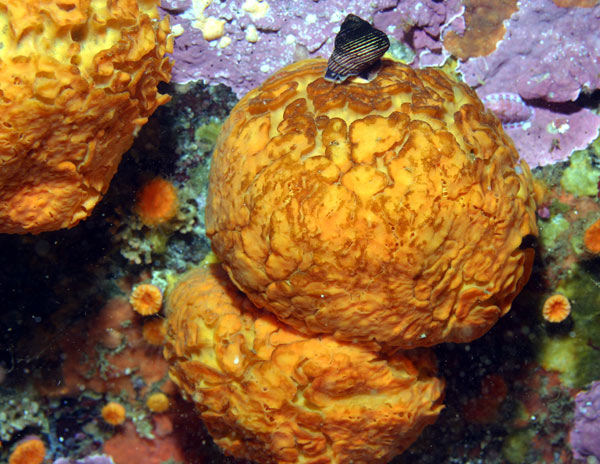
Joe Davis / Bacterial Radio
Bacterial Radio exhibits several bacterially-grown platinum/germanium electrical circuits (crystal radios) on glass substrates. Joe Davis, in collaboration with Ido Bachelet and Tara Gianoulis from Harvard Medical School in Boston, used bacteria altered with variants of a gene from orange marine puffball sponges (Tethya aurantia) to plate electronic circuits on Petri dishes and microscope slides. Here, genetically-modified bacteria are embedded in non-conductive materials containing metal salts, and then optically induced to plate specific, electrically conductive circuits. These Bacterial Radios on display are connected to high impedance telephone headsets, antennae and ground, so that visitors may use them to actually listen to AM radio broadcasts. Using the gene silicatein for his Bacterial Radio, referring to the pervasive use of silicon-based products for telecommunication devices, Joe Davis takes the underlying metaphors literally, and ironically reverses the main goal of synthetic biology by applying biological principals to electronic engineering, instead of vice versa. While synthetic biologists attempt to create “genetic circuits” made out of standard biological parts, devices and systems, frequently citing electronic engineering as their most favorite metaphor, critics argue that living organisms are too complex to be designed and constructed like electronic circuits.
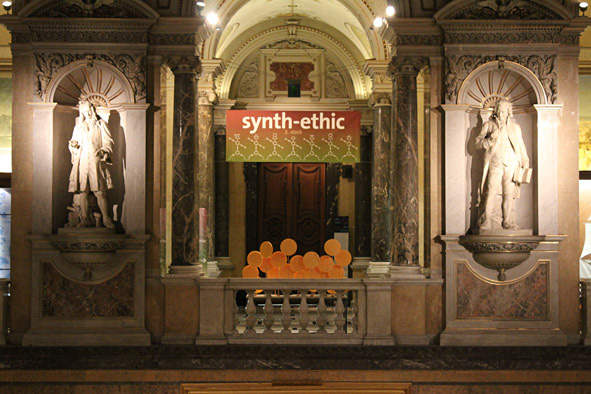
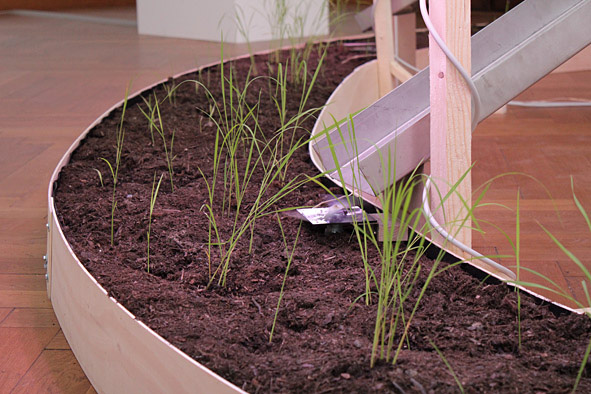
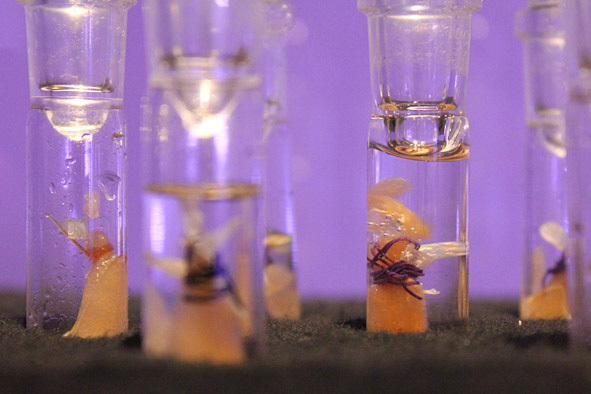
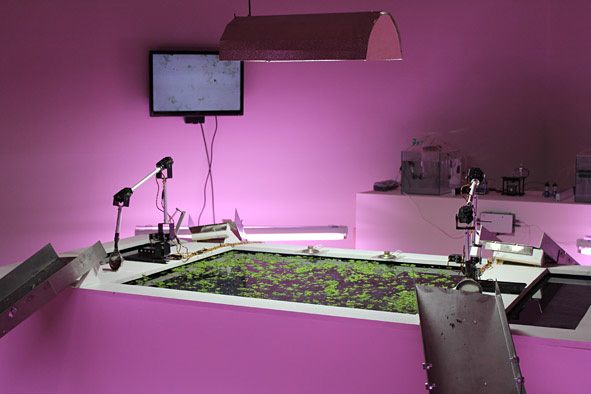
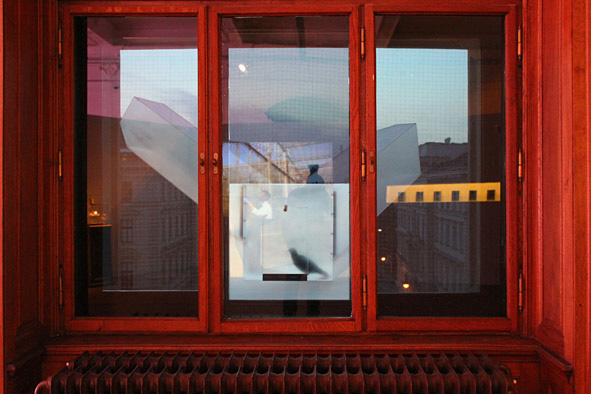
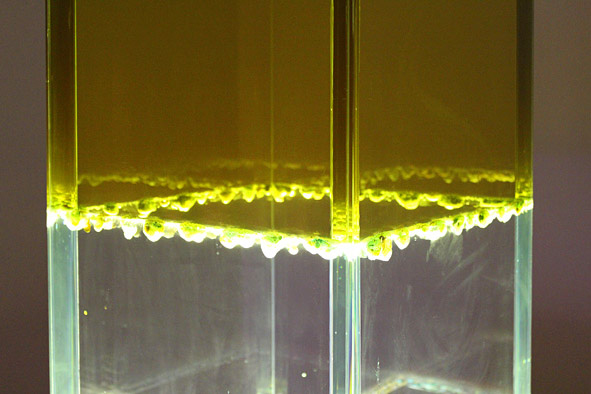
Have an overview of the first BIO·FICTION Science Art Film Festival!
synth-ethic was a significant part of the first edition of BIO·FICTION Science Art Film Festival. To learn more about the festival, visit its website! Or you can have a look at the summary video below.
Bio:Fiction Science Art and Film Festival Vienna 2011 – Summary from BIO·FICTION on Vimeo.
synth-ethic was produced by Biofaction KG in cooperation with the Museum of Natural History. Producer and scientific concept: Dr. Markus Schmidt; curator: Jens Hauser; production assistant: Sonja Schachinger.
Supporters:
Life Technologies (Geneart AG)
Chair for Systems and Synthetic Biology, Wageningen University
Philipps-Universität Marburg, LOEWE Zentrum für Synthetische Mikrobiologie
European Science Foundation- EUROCORES- EUROSYNBIO
Institute of Nanobiotechnology, University of Natural Ressources and Life Sciences, Vienna
Austrian Centre of Industrial Biotechnology
Institut für Allgemeine und Experimentelle Pathologie, Medizinische Universität Wien